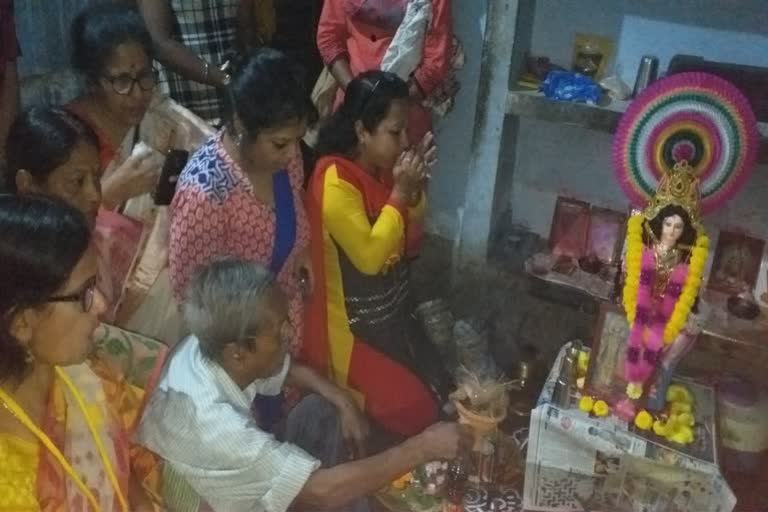Kolkata: Households and community pandals across West Bengal celebrated Lakshmi Puja on Sunday with much fanfare and fervour, fasting till late into the night with prayers for prosperity and wealth.
Popularly known as Kojagori Lakshmi puja in this part of the country, it is observed on the first full moon night (Kojagori Purnima) after Durga puja.
The word Kojagori literally means a night of awakening and signifies "ke jege ache" or "who is awake", in keeping with the belief that Lakshmi, the goddess of wealth, visits every house at night to ascertain who is awake. It is believed she blesses those who are awake with fortune and prosperity.
To guide the goddess into their homes, women and children made colourful patterns (called 'alpona') out of rice flour on the floor, across doorways and inside temples. Powdered rice was used to draw the goddess's feet entering the house.
Families offered grains, flattened rice, gold, clothes, fruits, vegetables as well as fish in obeisance to the deity who is worshipped in the form of clay idols, photographs and earthen discs with paintings of Lakshmi (called 'pat').
Sounds of conch shells reverberated across the eastern metropolis in the evening as the rituals started in full swing, ahead of the late night vigils to welcome the goddess.
The puja also coincides with the harvest festival or 'Nabanna'.
Family gatherings with grand feasts helped mask the sadness that prevails after the conclusion of Durga puja.



